Social Rules for Kids
Social Rules for Kids
The Top 100 Social Rules Kids Need to Succeed
Susan Diamond, MA, CCC
Foreword by Ann Gordon, PhD, BCET

2011 AAPC
P.O. Box 23173
Shawnee Mission, Kansas 66283-0173
www.aapcpublishing.net
All rights reserved. No part of the material protected by this copyright notice may be reproduced or used in any form or by any means, electronic or mechanical, including photocopying, recording, or by any information storage and retrieval system, without the prior written permission of the copyright owner.
Publishers Cataloging-in-Publication
Diamond, Sue (Susan Lynn), 1961
Social rules for kids : the top 100 social rules kids need to succeed / Sue Diamond ; illustrated by Sally Blakemore. -- Shawnee Mission, Kan. : AAPC Publishing, c2011.
p. ; cm.
ISBN: 978-1-934575-84-0; eISBN: 978-1-937473-17-4
LCCN: 2011929066
Audience: ages 7-14, plus parents and teachers.
1. Social skills in children--Juvenile literature. 2. Social skills in adolescence--Handbooks, manuals, etc. 3. Socialization--Juvenile literature. 4. Socialization--Handbooks, manuals, etc. 5. Interpersonal relations in children--Juvenile literature. 6. Interpersonal relations in adolescence--Handbooks, manuals, etc. 7. [Social skills--Handbooks, manuals, etc. 8. Interpersonal relations--Handbooks, manuals, etc.] I. Blakemore, Sally. II. Title.
HQ783 .D53 2011
646.7/008--dc22 1106
This book is designed in Chalkduster and Helvetica Neue.
Cover and chapter art by Sally Blakemore, Arty Projects Studio, Ltd.
Printed in the United States of America.
This book was inspired by all of my students who use the rules and experience progress with their social skills. My students are so brave, smart, and fun. Thanks! This book is for you!
Sue Diamond
Foreword
For several decades now, Ive worked in various capacities with children struggling to manage their social world. Some of these children have difficulties because of learning disabilities, some because of autism spectrum disorders, and some because of emotional challenges. What these children share is that they dont know what to do when, what to say to whom, or, in short, how to make and keep friends. Parents often ask me for some book some guide that might help them and their children navigate this social maze. Well, now we have just such a book!
At core, these children do not easily learn from experience the way other children do. They cannot make sense of the feedback they get from the adults in their lives, nor do they understand the reactions of their peers. They get easily frustrated, sometimes depressed, and often angry, because they dont know why people dont do what they want them to do in any given moment. The fact that others might have different interests, desires, and needs is mysterious to them.
One such young man I know received Miss Manners as a gift from his grandmother when he was a teenager. It changed his life. He read it from cover to cover and learned to follow the dictates on etiquette it contained. Why did this happen? Well, etiquette is a set of rules. These rules say very clearly when X you do Y. And this is something these children can often do: They can understand and follow the rules of social behavior when, and only when, these rules are made entirely explicit, as they are in Miss Manners, and as they are in Social Rules for Kids.
But what should those rules be? Sue Diamond answers this question by drawing upon her work with the children themselves. Together, they devised rules that apply directly to the childrens real-world lives lives of being teased, not fitting in, being bullied, behaving inappropriately, not knowing how to have a conversation, and not having friends. There are other books on the market geared towards helping children learn one or another group of social skills, but no other book that I know of speaks to children as directly and honestly as does this one. These 100 rules are a must for any child who wants to succeed in the complex social world of childhood and adolescence.
Ann Gordon, PhD, BCET, has spent the past 35 years working in education with children and their families, supervising teachers, clinicians, and educational therapists, and conducting classroom-based research. She splits her time between her educational consulting work at Educational Services Associates (ESA) and her adult psychotherapy offices in San Rafael and Oakland, California. |
TABLE OF CONTENTS
About The Top 100 Social Rules for Kids
The rules in this book began about 16 years ago. One of my students wanted to use greetings when he saw people he knew but wasnt sure of how to go about it. We wrote a rule on greetings so he could practice and remember what to do. He found it so helpful that we wrote rules for many other situations. When I showed the rules to my other students, they wanted to use them, too. I continue to write new rules to this day. And now my hope with this book is to reach even more students to make their lives easier and more successful.
The rules were chosen to address students social communication needs in their school and home life. Current topics, such as the Internet and video games, are used as examples to help with social interactions that are relevant to todays students. Topics such as friends and bullying were chosen because they are among the ongoing challenges in many childrens daily lives. In many instances, rules overlap. This is done deliberately to emphasize certain important skills and behaviors.
Each rule is set up on a separate page, starting with a short introduction or explanation, followed by easy-to-follow steps, and ending with a take-away message (Remember). Learning is an active process; we learn by doing.
Many parents are not sure of what to say and do to help their children improve their social interactions. This book helps open the door of communication between parent and child as they read the rules together and develop a social plan. I encourage parents and teachers to work with the child to apply the rules at every opportunity and give praise for practice. Remember, children are attempting new ways of interacting, which requires daily application, persistence, and support. When children try, and gradually master, these new ways of interacting, you can expect increased confidence and success in social interaction.
SOCIAL THOUGHTS
I want friends
Sometimes its hard making new friends.
Sometimes its difficult keeping friends.
Sometimes its a challenge knowing what to say.
Sometimes its hard listening in a group of friends.
Sometimes its difficult keeping up with friends conversations.
Sometimes I cant figure out what my friends mean.
SOCIAL HELP EASY, FUN-TO-FOLLOW RULES
WHAT TO DO
 Follow the rules that fit my situation.
Follow the rules that fit my situation.
 Look at the contents to find the rule I need.
Look at the contents to find the rule I need.
 Photocopy the rules. Hang them in my room, put them in my school notebook, or carry them with me for easy reminders.
Photocopy the rules. Hang them in my room, put them in my school notebook, or carry them with me for easy reminders.


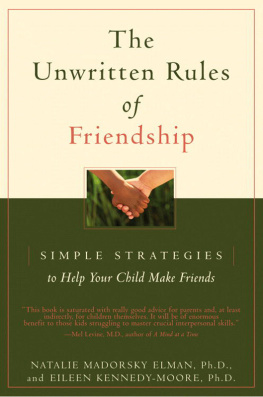
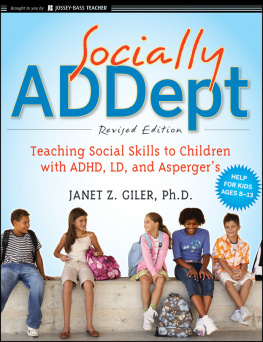

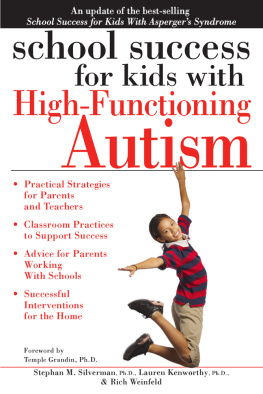
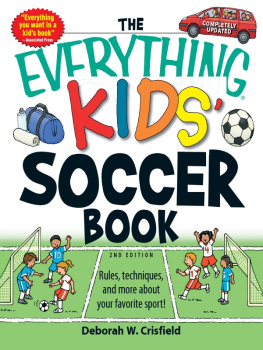

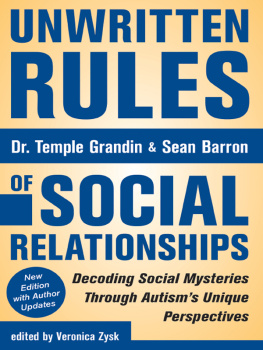


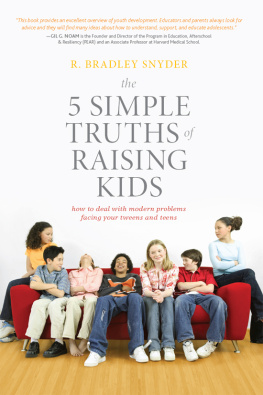

 Follow the rules that fit my situation.
Follow the rules that fit my situation.